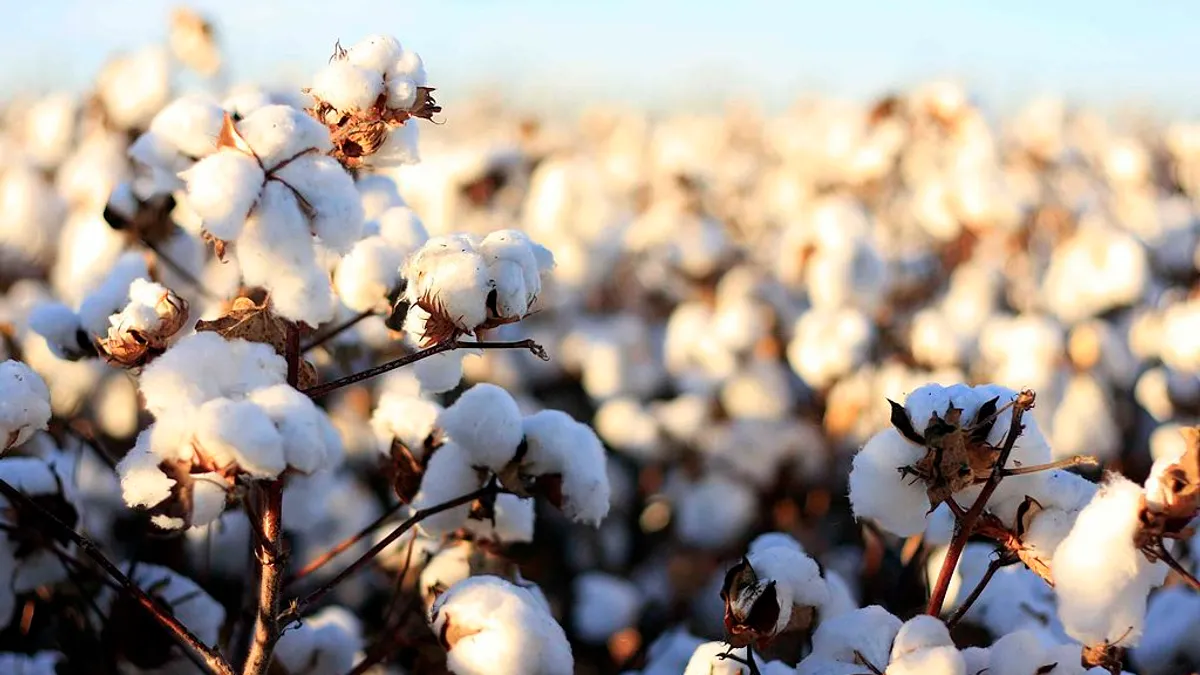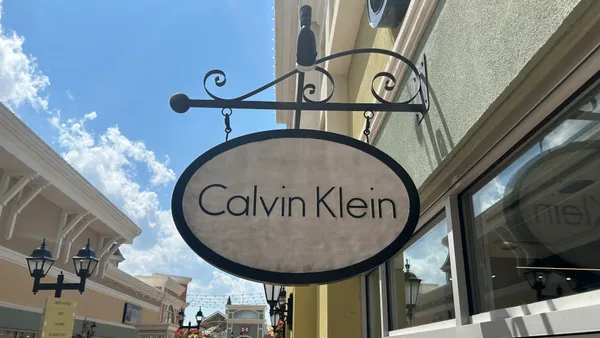Dive Brief:
- Adidas, H&M and Ikea lead a group of 77 firms for their sustainable cotton sourcing efforts in the latest Sustainable Cotton Ranking, released by the World Wildlife Fund, Pesticide Action Network and Solidaridad.
- The Sustainable Cotton Ranking focuses on firms using more than 10,000 metrics tons of cotton lint per year since these players have the most control over global cotton supply chains. Globally, the share of sustainable cotton grew to 21% of global production in the 2017-2018 season, up from 12% in 2015-2016, according to materials accompanying the ranking.
- Most companies with public commitments to more sustainable cotton sourcing are progressing toward their targets, according to the report, with Adidas, Gap and Levi Strauss among the most improved from 2017 to 2020. Of the companies that responded to the ranking's survey, Amazon and VF Corporation were the only ones that showed no progress between 2017 and 2020.
Dive Insight:
The report focuses on transparency above any one specific sourcing standard, bringing public disclosure as a force for improvement to the fore.
Seventy-five percent of cotton grown by one of several sets of standards recognized in the Sustainable Cotton Ranking is still sold in the conventional marketplace even as sustainable production gains marketshare, according to Solidaridad. Thus, in order to ensure the supply of sustainable cotton keeps increasing, the market needs more demand signals.
"If the failing brands took their responsibilities seriously, this wouldn’t be an issue,” said Isabelle Roger, global cotton program manager for Solidaridad Network in a statement.
The definition of sustainable cotton used for the report's assessment of the strength of sustainable cotton supply includes Organic cotton, Fairtrade cotton, Cotton Made in Africa (a formal standard covering agricultural and social impact) and cotton certified by the Better Cotton Initiative (BCI). BCI works with farmers to promote a cotton production method "that cares for the environment, minimising the negative effects of fertilisers and pesticides, and caring for water, soil health and natural habitats."
However, the companies listed in the Sustainable Cotton Ranking were evaluated for company policies that firmly direct more sustainable cotton sourcing — without stipulating by what standards — along with actual followthrough on these policies and the internal traceability available to benchmark sustainability improvements in their cotton supply.
The evaluation does not specify a definition of sustainable cotton because administering organizations see transparency and public reporting as a key enabler of accountability. Evaluation questions are 'yes or no' regarding the existence of company policies around pesticides, water reduction, biodiversity, cotton recycling, labor and human rights and time-bound sourcing targets.
To support setting these kinds of policies the report suggests purchasing organizations quantify and publicize the amount of cotton they use, map their supply chains at least to the country of origin level, participate in organizations like BCI and work closely with suppliers to educate and incentivize change.
Supply chain mapping as a form of transparency is a slow-growing trend for raw materials with outsized social and environmental impacts. Mars disclosed in March it has mapped 24% of its cocoa supply chain as part of an effort to rid its supply chain of deforestation by 2025.
Mapping, along with specific definitions for sustainable sourcing and targets for how supply will shift over time, is part of the transparency the report calls for. H&M pledged 100% sustainable cotton by 2020 — defined as organic, recycled or BCI approved. The company is currently at 43% sustainable supply, according to an interview with Harsha Vardhan, global environment manager at H&M Group, released with the ranking report.
Last year, the Better Cotton Initiative recognized Adidas, Gap, Levi Strauss, and Nike among the top-ranking firms for the percentage of BCI-approved production within those companies' supply chains.
This story was first published in our weekly newsletter, Supply Chain Dive: Procurement. Sign up here.














